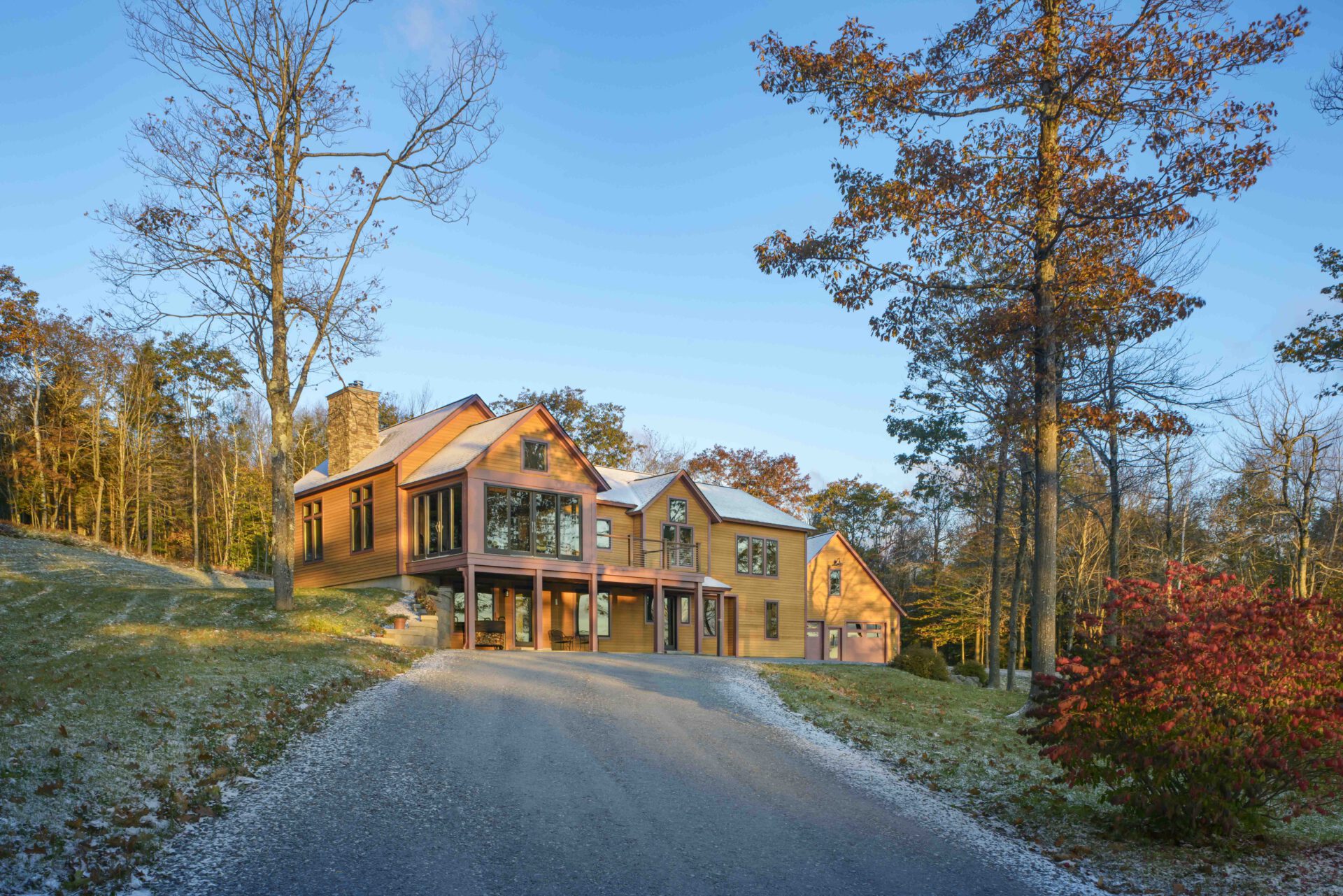Sustainability programs are plentiful and important in helping people build more responsibly. However, obtaining the different building certifications can be cumbersome and expensive, making the prospect unreachable for many. We’ve seen the narrative of chasing the ultimate sustainable building play out repeatedly, only to be value-engineered when costs start rising. It’s frustrating for everyone and goes against our belief that we are responsible for our work’s impact on the environment. Earlier this year, Michael Petrovick Architects set a goal to take a more active role in educating our clients on the importance of building sustainably. Last month, we had an epiphany.
Finding the one opportunity for a project to be more sustainable is a worthy goal.
Three people from our office had the opportunity to attend sustainability conferences in April. Mike and Hunter headed to Building Energy Boston, hosted by NESEA, and Cory attended Better Building by Design, hosted by Efficiency Vermont. The takeaways from both conferences were similar, and for MPA staff centered around the idea that doing something is way better than doing nothing. Here are our takeaways:
- Deep retrofits aiming to get an old building to net-zero carbon aren’t always the right financial approach. In a cost-benefit analysis, the cost of new insulation, triple pane windows, and an airtight facade often outweighs the cost savings the owner can expect to recoup through reduced energy costs.
- In 2040, 60 percent of the building stock will include the buildings we see today. That means we need to get smart about upgrading these older buildings’ energy efficiency cost-effectively, and it probably means that the majority will not be able to achieve net zero.
- A Pretty Good House is good enough in many cases. Pretty Good House has a framework and guidelines for achieving an energy-efficient home that makes sense for you financially. A critical concept with this framework is to build the house you need, which is likely much smaller than the house you think you want.
- Information sharing is critical to building more sustainably. There was a common trait among the people attending these conferences. Everyone was eager to share information to better the profession, from a wall detail to a database of embedded carbon in materials.
- We need to be cognizant of both embodied carbon and operational carbon. Embodied carbon includes everything that goes into getting the building built (materials, manufacturing of those materials, delivery of the materials to the site, and energy used during construction). Operational carbon is the energy needed to operate the building daily (heating and cooling, electricity, and water use). We need to do a better job of constructing buildings out of materials that make environmental sense. That starts with limiting concrete and steel.
There is a place for formal certifications, particularly in providing frameworks for meeting sustainability goals. Here’s an overview of some of the more recognized programs.
Leadership in Energy and Environmental Design (LEED): This is one of the world’s most widely recognized green building certification programs. It provides a framework for designing, constructing, and operating sustainable buildings.
WELL Building Standard: This certification promotes human health and wellness in buildings by addressing factors such as air quality, water quality, lighting, and comfort.
Green Globes: This web-based program provides an interactive assessment and rating tool to evaluate the environmental performance of buildings in the United States.
Living Building Challenge: This certification focuses on creating buildings that operate as self-sufficient, regenerative ecosystems that enhance the surrounding environment and support human health and wellbeing.
Energy Star: This certification program is managed by the U.S. Environmental Protection Agency (EPA) and focuses on promoting energy efficiency in buildings.
Passive House: This standard is based on maximizing energy efficiency, minimizing environmental impact, and ensuring indoor air quality and comfort. Buildings that meet the Passive House standard are highly energy-efficient, with minimal heating and cooling requirements, resulting in lower energy bills and reduced carbon emissions.
Keep an eye out for more articles like this as we continue to meet our goal of educating our clients about small changes they can make to achieve big environmental gains.


